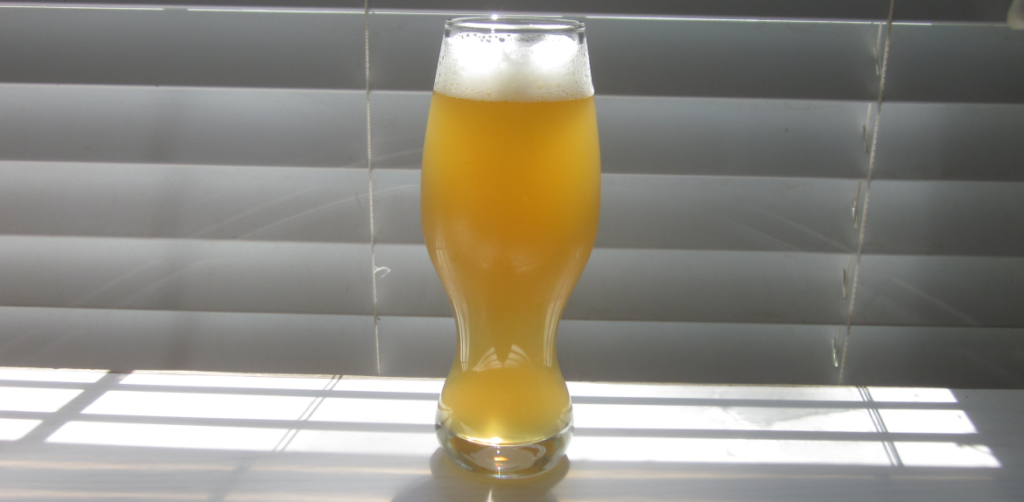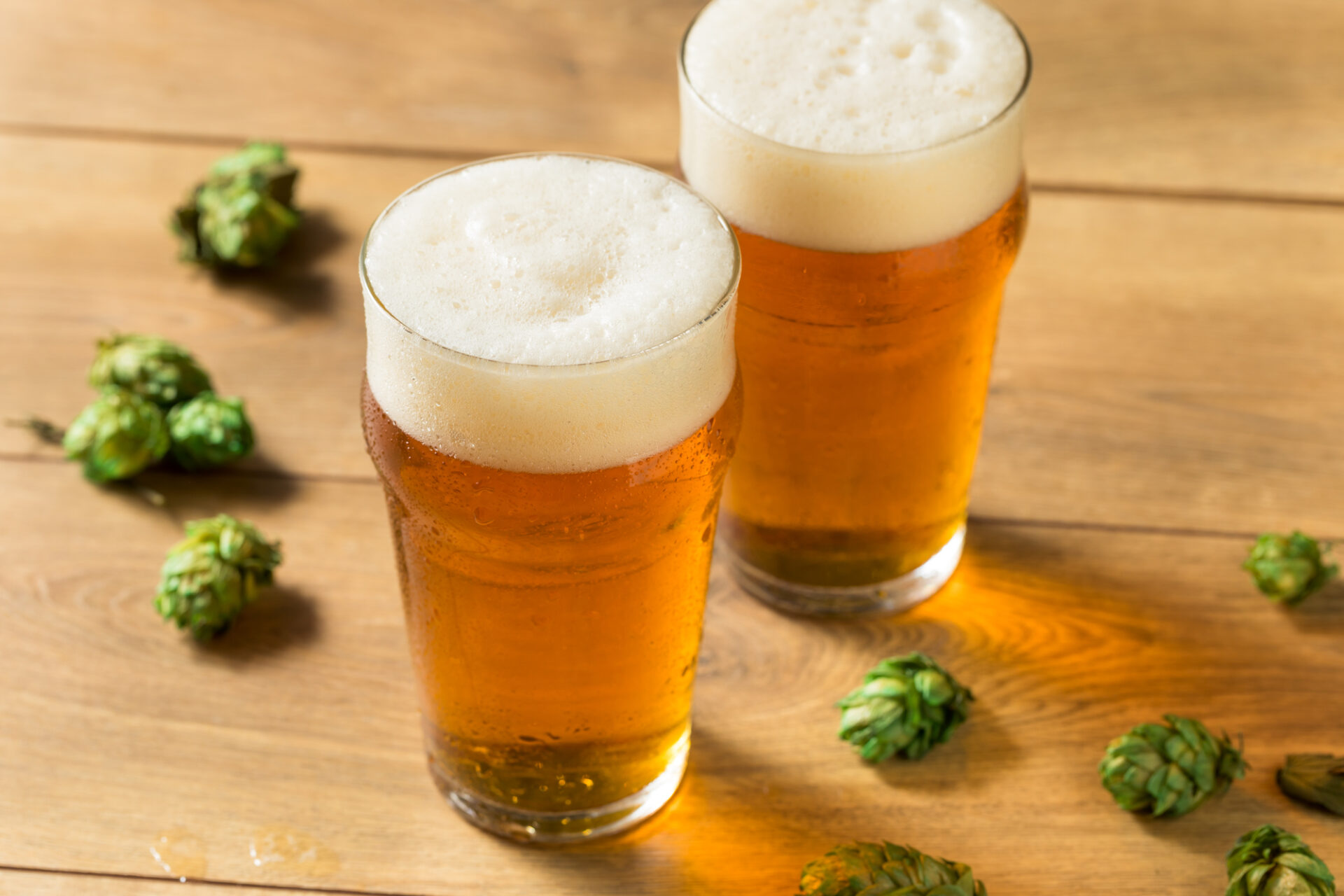Welcome to the realm of pale ale brewing, where passion, precision, and creativity converge to create a symphony of flavors. This comprehensive guide will equip you with the knowledge and techniques to craft your own pale ale, an iconic beer style renowned for its balanced bitterness, crisp maltiness, and refreshing aroma.
Embark on this brewing journey as we delve into the history, ingredients, process, variations, and troubleshooting tips for pale ale brewing.
From the humble origins of English pale ales to the modern interpretations of American and India pale ales, this guide will illuminate the nuances of each style. Discover the essential ingredients, from the selection of malts and hops to the choice of yeast and water, and understand their impact on the final product.
Follow the step-by-step brewing process, from mashing and lautering to boiling and fermentation, and gain insights into the science behind each stage.
Introduction to Pale Ale

Pale ale is a refreshing and flavorful beer style known for its light color, moderate bitterness, and balanced hop and malt characteristics. Originating in England, pale ale has a rich history and is enjoyed worldwide.
Pale ales are typically brewed with pale malt, which gives them their light color. The use of hops adds bitterness and flavor, while the fermentation process contributes to the beer’s alcohol content and carbonation.
Origins and Evolution
The history of pale ale can be traced back to the 17th century in England. At that time, brewers began using pale malt instead of the traditional brown malt, resulting in a lighter-colored beer with a cleaner taste. These early pale ales were often referred to as “October beers” because they were typically brewed in the fall and aged until the following spring.
Over time, pale ale evolved and became more popular. In the 19th century, pale ales were being exported to India, where they became known as India Pale Ales (IPAs). IPAs were brewed with more hops to withstand the long journey to India, resulting in a more bitter and flavorful beer.
Popular Pale Ale Brands
Today, pale ale is one of the most popular beer styles in the world. There are many different brands of pale ale available, each with its own unique flavor and characteristics. Some popular pale ale brands include Sierra Nevada Pale Ale, Bell’s Two Hearted Ale, and New Belgium Fat Tire Amber Ale.
Ingredients and Equipment

Crafting a delightful pale ale requires a careful selection of ingredients and appropriate brewing equipment. Let’s delve into the essential components that contribute to the unique characteristics of this beloved beer style.
Grains, hops, yeast, and water form the foundation of a pale ale recipe. Each ingredient plays a crucial role in determining the beer’s flavor, aroma, and overall quality.
Grains
Pale ale grains typically consist of a combination of base malts, specialty malts, and adjuncts. Base malts, such as pale ale malt or Maris Otter, provide the backbone of the beer, contributing to its body, fermentability, and flavor. Specialty malts, like crystal malt or Munich malt, add depth of flavor, color, and complexity.
Adjuncts, such as flaked oats or wheat, can be used to enhance mouthfeel, body, and head retention.
Hops
Hops are responsible for imparting bitterness, aroma, and flavor to pale ales. Bittering hops are added early in the boil to contribute bitterness, while aroma hops are added later to provide fruity, floral, or citrusy notes. Common hop varieties used in pale ales include Cascade, Centennial, Chinook, and Simcoe.
Yeast
Yeast is the microorganism responsible for converting fermentable sugars into alcohol and carbon dioxide during fermentation. Different yeast strains can produce distinct flavor profiles in pale ales. Some popular yeast strains include US-05, S-04, and WLP001.
Water
Water comprises the majority of a pale ale and plays a significant role in determining its overall character. The mineral content and pH of the water can influence the flavor, bitterness, and clarity of the beer. Many brewers treat their water to achieve the desired mineral profile for their pale ale.
Brewing Process
The brewing process of pale ale involves several crucial steps, from mashing and lautering to boiling and fermentation. Understanding these steps is essential for creating a flavorful and balanced pale ale.
Mashing
Mashing is the initial stage of brewing, where the crushed grains are mixed with hot water to activate enzymes that convert starches into fermentable sugars. The temperature and duration of the mashing process play a vital role in determining the final character of the beer.
Typically, pale ale mashing temperatures range from 148°F (64°C) to 158°F (70°C), with a typical mash time of 60 to 90 minutes.
Lautering
After mashing, the wort (the sugary liquid extracted from the grains) is separated from the spent grains through a process called lautering. This is achieved using a lauter tun, a vessel with a perforated false bottom that allows the wort to drain through while retaining the spent grains.
The lautering process is crucial for obtaining a clear and flavorful wort.
Boiling
The wort is then transferred to a brew kettle and brought to a boil. Boiling serves several purposes: it sterilizes the wort, enhances its flavor, and facilitates the isomerization of hop compounds, which contribute bitterness, aroma, and flavor to the beer.
Hops are typically added in stages during the boiling process, with the timing and quantity of each addition determining the final hop character of the pale ale.
Fermentation
Once the wort has been boiled and cooled, it is transferred to a fermentation vessel, where yeast is added to convert the fermentable sugars into alcohol and carbon dioxide. The fermentation process typically takes several days to complete, with the ideal temperature for fermentation ranging from 60°F (15°C) to 70°F (21°C).
During fermentation, the yeast consumes the sugars and produces various compounds that contribute to the beer’s flavor and aroma.
Recipe Variations
Pale ales offer a diverse range of flavors and aromas, with distinct characteristics that set them apart. Three popular pale ale styles include American pale ale, English pale ale, and India pale ale, each with unique qualities to explore.
American Pale Ale
American pale ales are known for their citrusy, fruity, and floral hop flavors, often featuring a prominent bitterness that balances the malt sweetness. They are typically light to medium-bodied, with a crisp and refreshing finish.
English Pale Ale
English pale ales showcase a more balanced flavor profile, with a blend of malt and hop character. They often have a nutty, toffee-like maltiness, complemented by earthy, herbal hop notes. English pale ales are typically lower in bitterness than American pale ales and have a smooth, easy-drinking nature.
India Pale Ale
India pale ales are characterized by their intense hop flavors and aromas, often featuring citrusy, tropical, and piney notes. They have a higher bitterness level compared to other pale ale styles and a medium to full body. India pale ales are known for their assertive hop character and a lingering finish.
Tips for Experimenting with Hop Varieties
Experimenting with different hop varieties and combinations can unlock a wide range of flavors and aromas in pale ales. Some popular hop varieties for pale ales include Cascade, Centennial, Chinook, Simcoe, and Amarillo, each contributing unique characteristics to the beer.
For a citrusy, fruity flavor profile, consider using hops like Cascade or Centennial. For earthy, herbal notes, Chinook and Simcoe are excellent choices. Amarillo hops offer a tropical, juicy character, adding complexity and depth to pale ales.
Feel free to mix and match different hop varieties to create unique flavor combinations. Experiment with different hop additions during the brewing process, such as early boil additions for bitterness, late boil additions for flavor, and dry hopping for aroma.
By exploring various hop combinations, you can craft pale ales with distinct and captivating flavor profiles.
Troubleshooting Common Issues
Homebrewing pale ale is generally a straightforward process, but it’s not without its challenges. Here are some common issues that homebrewers may encounter, along with solutions and preventive measures to ensure a successful brewing experience.
Off-flavors
Off-flavors in pale ale can arise from various sources, including poor sanitation, improper fermentation temperatures, and contamination. To prevent off-flavors:
- Maintain a clean and sanitized brewing environment and equipment.
- Control fermentation temperatures according to the yeast strain used.
- Use high-quality ingredients, including fresh hops and malt.
- Avoid exposing the wort to oxygen during the brewing process.
Stuck Fermentation
Stuck fermentation occurs when the yeast stops converting sugar into alcohol, leaving the beer sweet and potentially infected. To prevent stuck fermentation:
- Use a healthy yeast starter to ensure a sufficient population of viable yeast cells.
- Maintain proper fermentation temperatures throughout the fermentation process.
- Provide adequate nutrients for the yeast, such as oxygen and nitrogen.
- Avoid over-pitching yeast, as this can lead to nutrient depletion.
Contamination
Contamination can occur at any stage of the brewing process, leading to off-flavors, spoilage, and potential health risks. To prevent contamination:
- Maintain a clean and sanitized brewing environment and equipment.
- Use sanitized containers and utensils when handling wort and beer.
- Avoid exposing the wort and beer to open air during the brewing process.
- Use a blow-off tube during fermentation to prevent contamination from entering the fermenter.
Final Thoughts
As you embark on your pale ale brewing journey, remember that experimentation and personalization are key. Don’t be afraid to tweak the recipe, try different hop combinations, and explore various yeast strains to create your unique signature brew. With patience, dedication, and a thirst for knowledge, you will master the art of pale ale brewing and impress your friends and family with your homemade creations.
So, gather your ingredients, prepare your equipment, and let’s begin the adventure of crafting your own pale ale masterpiece.
Answers to Common Questions
What is the ideal fermentation temperature for pale ale?
The ideal fermentation temperature for pale ale typically ranges between 60°F (15°C) and 68°F (20°C). This temperature range allows the yeast to work efficiently and produce the desired flavors and aromas without introducing off-flavors.
How can I prevent stuck fermentation in pale ale brewing?
To prevent stuck fermentation, ensure proper aeration of the wort before pitching the yeast. Maintain the ideal fermentation temperature and avoid temperature fluctuations. Use a healthy yeast starter and pitch the appropriate amount of yeast cells. Monitor the fermentation process closely and adjust the temperature or provide additional nutrients if necessary.
What are some common off-flavors to look out for in pale ale?
Common off-flavors in pale ale include diacetyl (butterscotch-like flavor), acetaldehyde (green apple-like flavor), DMS (sulfury or cooked corn-like flavor), and oxidized flavors (cardboard or sherry-like flavors). These off-flavors can arise due to improper fermentation, poor sanitation, or exposure to oxygen.
